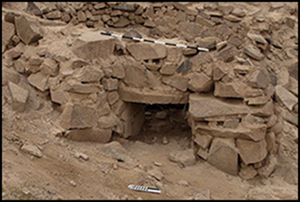Article contents
Assembling the dead: human vertebrae-on-posts in the Chincha Valley, Peru
Published online by Cambridge University Press: 02 February 2022
Abstract

The post-mortem manipulation of human bodies is documented in many regions of the world, including South America. Recent archaeological fieldwork in the Chincha Valley, Peru, adds to this catalogue nearly 200 examples of the threading of human vertebrae onto reed posts. Here, the authors report on the distribution and composition of these ‘vertebrae-on-posts’, which are radiocarbon-dated to the Late Horizon (AD 1400–1532) and Colonial (AD 1532–1825) periods. The authors argue that these modified remains represent a social process that reconstructed the dead in response to Colonial-period looting. This manipulation of human remains reflects protracted relationships between the living and the dead, and the enduring social lives of human remains.
- Type
- Research Article
- Information
- Copyright
- Copyright © The Author(s), 2022. Published by Cambridge University Press on behalf of Antiquity Publications Ltd.
References
- 3
- Cited by


